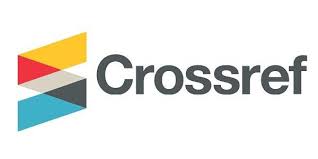The Influence of Network Exposure, Social Influence and Recognition Towards the Adoption of E-commerce in College Students
DOI:
https://doi.org/10.26740/joaep.v4n3.p150-161Keywords:
Network Exposure, Social Influence, Recognition, Adoption of E-commerceAbstract
This study aims to analyze what factors can influence students to continue using gamification services on the Shopee e-commerce application. The study was conducted on Office Administration students Class of 2020-2023 with a sample of 150 from the total population of 252 students determined using a Krecjie table with a signification level of 0.05. in the process of analyzing research data using Structural Equation Modeling-Generalized Structured Component Analysis (SEM-GSCA) using gamification has a significant positive influence on social influence and recognition. Social influence has a significant positive effect on attitude, besides that recognition also has a significant positive effect on attitude. Furthermore, the attitude has a significant positive effect on continued use intention. This research can able to provide a better understanding, especially on the application of gamification in e-commerce by examining social influence in games and recognition to continue using the Shopee e-commerce platform.
Downloads
References
Chin, W. W. (1998). Partial Least Squares Approach to Structural Equation Modeling. Houston: University of Houston.
Fornell, C. &. (1981). 1981. Journal of Marketing Research, 39–50.
Ghozali L, L. H. (2015). Partial Least Squares Konsep Teknik dan Aplikasi Menggunakan Program SmartPLS 3.0 Ed. Ke-2. Semarang: Penerbit Universitas Diponegoro.
Hair, Joe F. (2014). Partial least squares structural equation modeling (PLS-SEM): An emerging tool in business research. European Business Review, 106-121.
Hamari, J. (2013). Social motivations to use gamification: An empirical study of gamifying exercise. ECIS 2013 - Proceedings of the 21st European Conference on Information Systems.
Hwang, H. (2021). GSCA Pro User ' s Manual GSCA Pro for Windows User ’ s Manual. ResearchGate.
Kinasih, M. P. (2023). Pengaruh Price Discount, Product Knowledge, Dan Time Pressure Terhadap Impulse Buying Pada Fitur Shopee Live. Jurnal Ilmiah Multidisiplin, 88-101.
Koivisto, J. (2014). Demographic differences in perceived benefits from gamification. Computers in Human Behavior, 179-188.
Kusumawardani, K. A. (2023). The role of gamification, social, hedonic and utilitarian values on e-commerce adoption. Journal of Business Research, 158-177.
Meneau, L. K., & Moorthy, J. (2022). Struggling to make ends meet: can consumer financial behaviors improve? International journal of bank marketing, 263-296.
Merhabi, M. A. (2021). Gamification for Brand Valued co-creation : A systematic literature review. Information (Switzerland).
Sarstedt, M. (2020). Structural model robustness checks in PLS-SEM. Tourism Economics, 531-554.
Sugiyono. (2020). Metode Penelitian Kualitatif dan Metode Penelitian Kuantitatif Kualitatif Dan R&D. Bandung: Alfabeta.
Sukmaningsih, D. W. (2020). Gamification effect between generation x and millenials: Study on e-commerce site. ICIMTech, 812-817.
Yang, Q. (2021). The critical factors of student performance in MOOCs for suistainable education: A case of chinese universities. Sustainability.
Downloads
Published
How to Cite
Issue
Section
 Abstract views: 122
,
Abstract views: 122
, PDF Downloads: 95
PDF Downloads: 95











